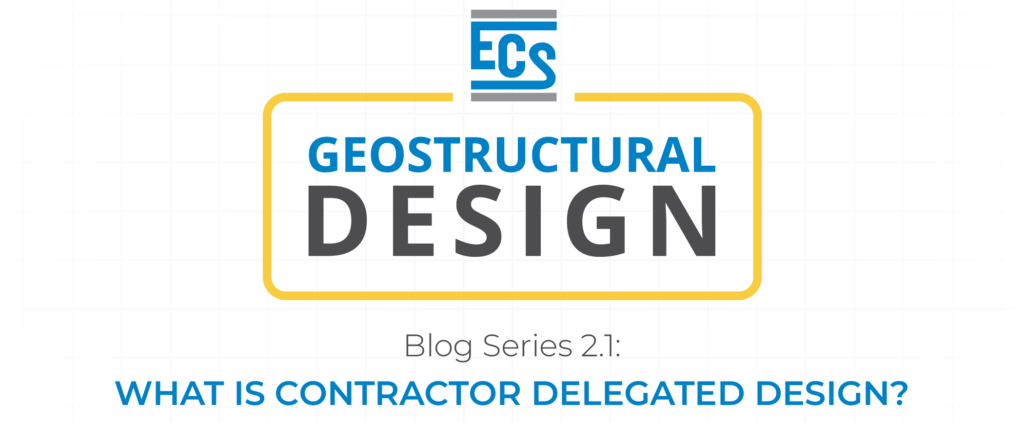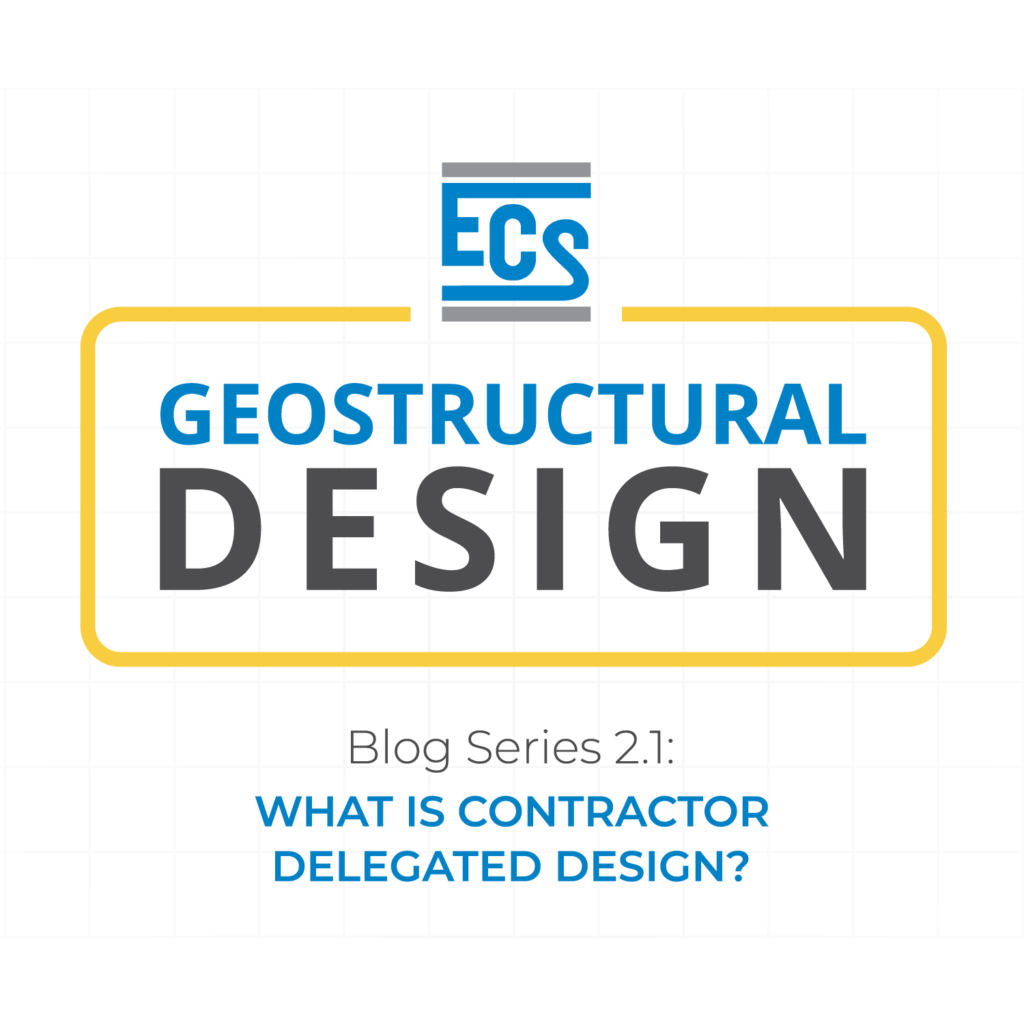
|
Contractor delegated design is a method of transferring select geostructural systems to specialty contractors outside of the project design team. These specialty systems generally include earth-retaining structures (retaining walls), temporary excavation support systems, engineered slopes, foundation support systems, ground improvement systems and a wide array of other specialized systems. Such systems are typically subject to less standardization than traditionally designed systems such as building superstructures, site grading, etcetera. While such delegation can result in innovative and cost-effective solutions, there are complexities brought about by the contractor delegated design delivery method. |
This is the first part in our second series about geostructural design.
Read the previous parts for more information:
Part 1: What Is Geostructural Design?
Part 2: Unique Aspects of Geostructural Design
Part 3: Why Hire a Geostructural Design Consultant
HOW ARE CONTRACTOR DELEGATED DESIGN SYSTEMS DIFFERENT?
There are a few key elements that make a contractor-delegated retaining wall or a shoring system different from typical building systems or site features such as concrete walls, utilities and pavements.

Rather than being constructed of typical materials such as concrete, contractor delegated design systems are often built with composites consisting of multiple proprietary or non-proprietary materials that are less standardized than typical building materials. The result can be a functional and cost-effective alternative.

The innovative design means and methods for installing delegated systems are less regulated, so they are not constrained by standard designs and construction practices, i.e., those commonly found in the International Building Code provided by the International Code Council.

Finally, most projects built on “simple” sites do not require specialty
systems, making knowledge of them less common than other types
of construction.
WHY ARE SPECIALTY SYSTEMS OFTEN DELEGATED?
In the early days of these specialty systems, the differentiating factors resulted in a concentration of the knowledge to design them in relatively small professional groups. As such systems were rare, traditional design teams were theoretically better served to outsource the responsibility for such designs to outside sources that specialized in them, rather than developing such capabilities internally. These outside sources generally took the form of specialty contractors with either internal or external design resources, typically performing the design and construction after the project has been designed, permitted, awarded and let.
The perceived and often real benefit of such an arrangement was that the end user—including the owner, property manager or anyone using the building—would receive a specialty product and benefit from the expertise of specialty firms while enhancing financial benefit. As industry knowledge of specialty engineering design of geostructural items has improved over the last 20 years, the benefits of delegated design have eroded leading project design teams to question if they remain in the client’s best interest, particularly when they are not coordinated with the initial project design team.
ARE THERE ISSUES WITH DELEGATED DESIGN?
The prevalence of this delivery method over time can make it appear as an “easy button” for project delivery. Fundamentally, a delegated design shifts the design work to the contractor from the original design team. That contractor may or may not have the necessary skill and experience to distinguish a delegated design that suits the overall needs of the project from a risky alternative that does not benefit the owner.
As with most techniques and technologies, they evolve and change. Such systems are much more prevalent than they were 20 or 30 years ago when they were emerging. Consequently, the number of options, and consequences of those options, available to project teams has increased. Navigating the array of options and potential pitfalls can be very ominous for a project team.

When the design is delegated without input on such systems during the design process, the design and constructed product lag the overall project design by months or years. If the delegated design solution is not vetted early, information and expectation gaps can develop, and they may not be understood until the system is being installed.
Some projects go well if the information gap is small or closed early. However, if the disconnect is significant, unexpected costs or long-term performance issues can arise. The risks of the information gap and how it might be closed are the focus of the next two installments of this series.
ABOUT THE EXPERTS:
Karl Higgins, PE, D.GE, earned a bachelor’s and master’s in engineering with a focus on geotechnical engineering.
Doug Chappell, PE, has a bachelor’s in mining engineering with experience in consulting and design-build specialty contracting.
Combined, they have more than 60 years of experience. Together, Doug and Karl lead the geostructural design practice at ECS.
Contact us to discuss your geostructural design needs.

